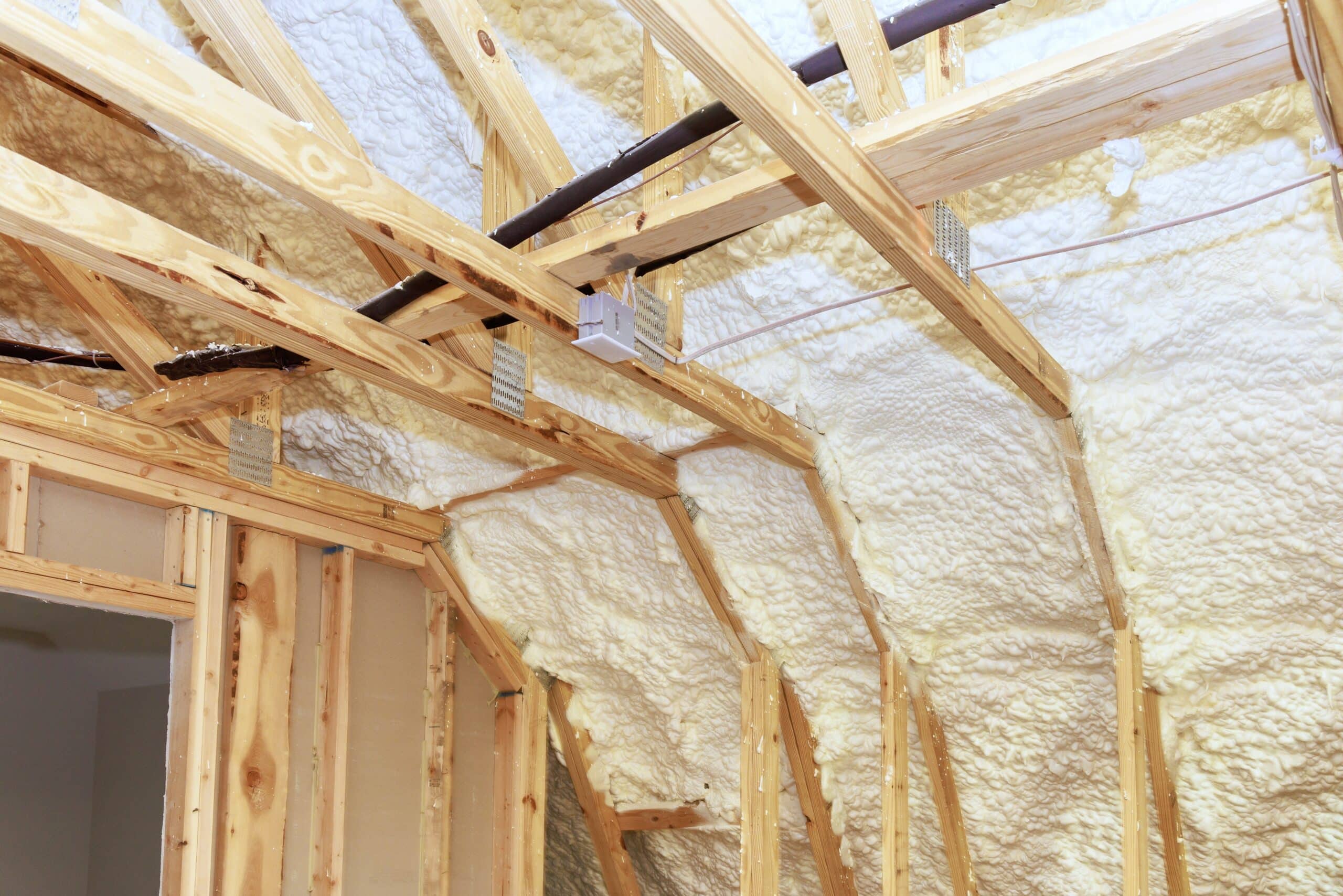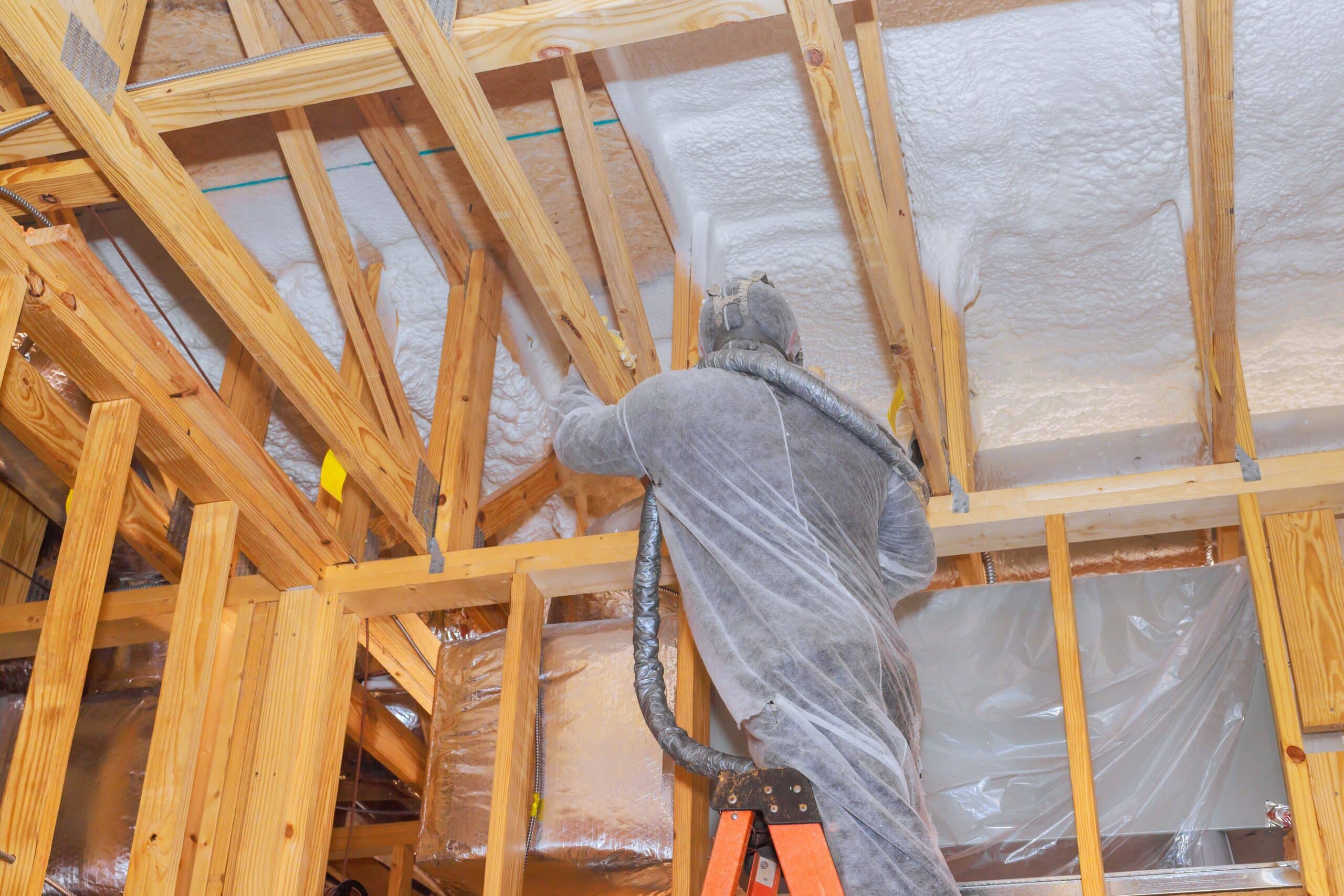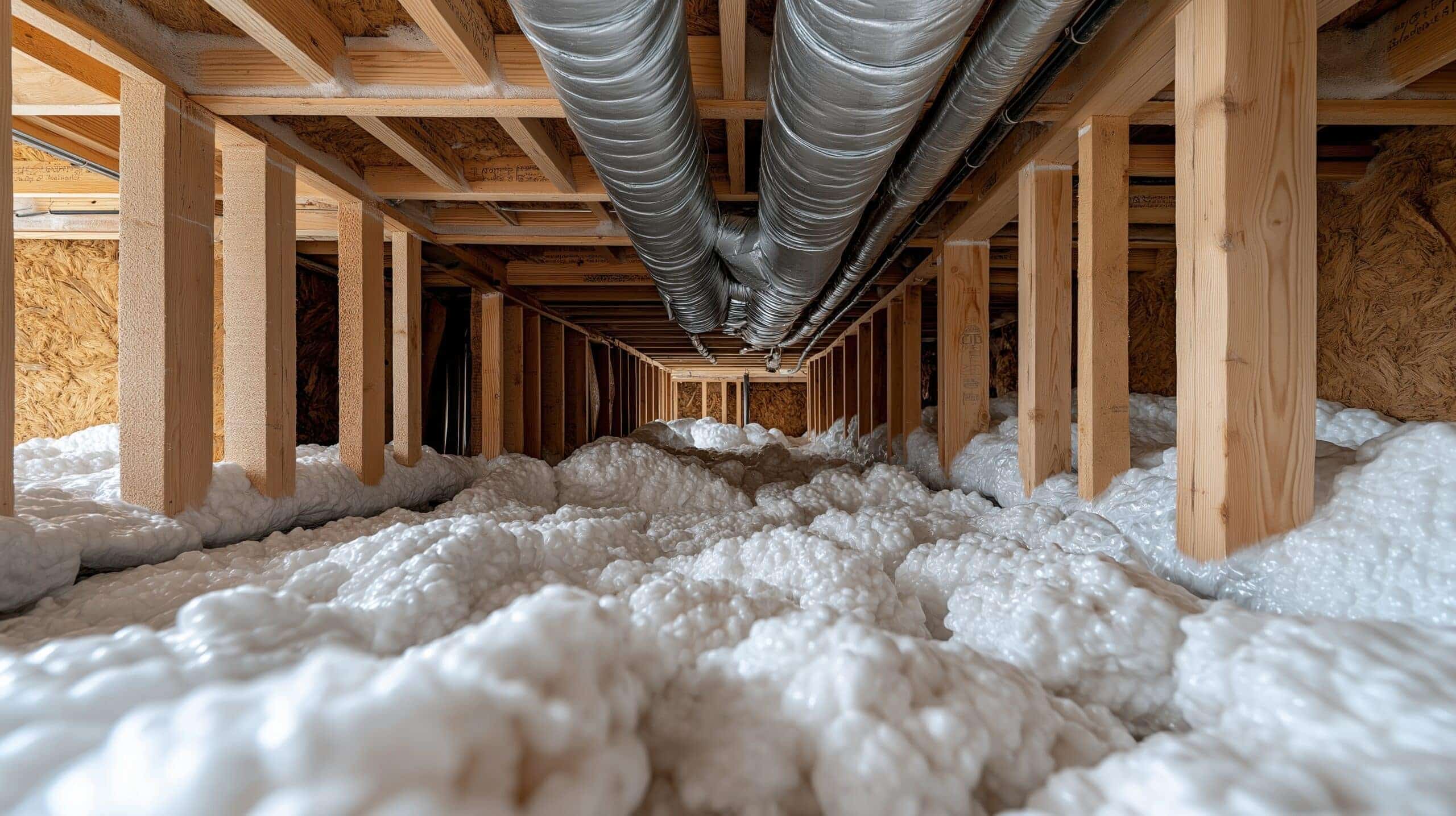
Radiant Barrier vs Fiberglass Insulation is one of the most common comparisons Raleigh homeowners face when improving energy efficiency and indoor comfort. Insulation is one of the most important elements in any Raleigh home it determines how comfortable you feel through every season, how much you spend on energy bills, and how efficiently your heating and cooling systems perform. In the Triangle region’s unique climate marked by humid summers and mild winters homeowners often face one big question: should they choose a radiant barrier or fiberglass insulation?
Both materials are designed to improve comfort and efficiency, yet they work in very different ways. Understanding how each performs and which aligns best with Raleigh’s weather can help you make a smart, lasting choice for your home.
For homeowners who want expert guidance and precision installation, Triangle Radiant Barrier has become a trusted local resource, delivering tailored solutions that enhance energy performance and overall comfort.
How Insulation Influences Comfort and Efficiency
Every home loses and gains heat through its roof, walls, and floors. In summer, heat radiates from the roof into your attic, raising indoor temperatures. In winter, warm indoor air escapes through poorly insulated spaces. This constant exchange forces HVAC systems to work harder, which means higher utility bills and less comfort.
The purpose of insulation is to slow or block that heat movement. In Raleigh, where attic temperatures can exceed 130°F during peak summer, the right insulation can make a dramatic difference in indoor temperature stability. Selecting a solution that addresses the region’s specific challenges ensures year-round comfort and helps protect your home’s long-term value.
Radiant Barrier: Reflecting Raleigh’s Summer Heat
A radiant barrier is designed to reflect heat energy rather than absorb it. Made from a thin, reflective layer of aluminum foil, it is typically installed along attic rafters or roof decking. When sunlight strikes your roof, the radiant barrier reflects most of the radiant energy away before it can enter your living space.
This approach is especially effective in the Southeast, where summers are long and the sun is intense. By keeping attic temperatures lower, radiant barriers reduce the strain on your cooling system and maintain more consistent indoor temperatures.
When installed by professionals, like those specializing in radiant barrier installation in Raleigh, NC, this system integrates seamlessly with your existing structure. It doesn’t require major renovations and can be combined with other insulation materials for enhanced performance.
The result is a noticeably cooler attic and reduced energy consumption—benefits that continue to pay off for years.
Fiberglass Insulation: The Reliable Thermal Blanket
While radiant barriers reflect heat, fiberglass insulation slows it down. This material, made from fine glass fibers, traps pockets of air that resist heat transfer. It can be used in walls, ceilings, floors, and attics to keep indoor temperatures steady throughout the year.
Fiberglass is versatile and durable, offering consistent thermal protection in both hot and cool seasons. It helps your home stay warmer during winter nights and limits heat gain during summer days. For Raleigh homeowners seeking balanced insulation performance, fiberglass insulation services in Raleigh, NC provide a dependable solution that aligns well with local building standards and energy goals.
Because fiberglass also dampens sound, many homeowners appreciate the added quiet it brings to living areas. It’s one of the most time-tested insulation methods, trusted by builders and homeowners alike.
The Science Behind Each System
The difference between radiant barrier and fiberglass insulation lies in how they handle the three forms of heat transfer—conduction, convection, and radiation.
- Radiant heat is the energy emitted by the sun that strikes your roof and travels through the attic space.
- Conductive heat moves through solid materials like roofing, wood, or drywall.
- Convective heat travels through air movement.
Fiberglass insulation focuses on slowing conduction and convection, while radiant barriers address radiation. When combined, they create a comprehensive thermal defense system: the radiant barrier reflects solar heat before it enters, and fiberglass insulation resists any heat that remains.
This layered strategy keeps your home comfortable regardless of outdoor conditions—a perfect match for Raleigh’s shifting weather patterns.
Why Climate Matters When Choosing Insulation
Raleigh’s climate is one of the defining factors in this decision. Hot, humid summers and moderate winters mean your home faces two very different thermal challenges each year.
During summer, attics can reach extreme temperatures, pushing heat down into living areas. A radiant barrier helps combat this by reflecting heat outward, keeping the attic cooler and easing the load on your air conditioner.
In winter, though temperatures are not severe, there are still enough chilly nights to make heat retention important. Fiberglass insulation helps keep warm air inside, reducing the need for constant heating.
The best insulation strategy for Raleigh often includes both materials working together radiant barriers managing the summer sun and fiberglass preserving warmth in cooler months. This balanced approach maintains comfort and keeps energy bills predictable throughout the year.
Energy Savings and Performance Impact
Energy efficiency is one of the main reasons homeowners invest in better insulation. In many Raleigh homes, HVAC systems account for nearly half of all energy use. By controlling how heat moves through your home, insulation allows these systems to operate more efficiently and last longer.
A properly installed radiant barrier can lower attic temperatures by as much as 30°F, reducing cooling costs by up to 20%. Fiberglass insulation, with its excellent R-value, helps maintain indoor stability, cutting heating and cooling cycles and saving even more energy over time.
These improvements not only translate to lower monthly bills but also reduce the overall carbon footprint of your household.
If you’d like to explore how fiberglass insulation can become a smart, long-term investment, this homeowner guide for Raleigh properties provides valuable insights on when to upgrade and how to get the best results.
Installation and Integration
Proper installation determines how well your insulation performs. Even the most advanced materials lose effectiveness if installed incorrectly.
Radiant barriers should be installed along the underside of the roof or rafters, leaving an air gap for optimal reflection. They can also be layered over existing insulation without removing it. Fiberglass, on the other hand, should fit snugly between joists or studs, with careful attention to sealing gaps and preventing compression.
When both systems are installed together, each complements the other. The radiant barrier prevents excessive solar heat from entering, while fiberglass insulation stabilizes indoor air. The combination creates a comfortable, energy-efficient environment that adapts seamlessly to Raleigh’s changing weather.
Comfort Beyond Temperature Control
The benefits of effective insulation go far beyond temperature regulation. With better insulation, indoor air remains cleaner, quieter, and more balanced.
Fiberglass insulation absorbs sound, helping minimize outside noise and creating a calmer indoor atmosphere. Meanwhile, radiant barriers reduce moisture accumulation in attics a common issue in humid regions like North Carolina.
Homeowners also notice that rooms stay more evenly conditioned, without hot or cold spots. The air feels fresher, and HVAC systems run more quietly and efficiently. All these factors contribute to a healthier, more enjoyable living space that adds tangible value to your property.
Durability and Maintenance
Both radiant barriers and fiberglass insulation are designed for long-term performance when installed correctly. Radiant barriers are resistant to mold, moisture, and pests because of their reflective surface. They maintain effectiveness over decades with little maintenance.
Fiberglass insulation can last the life of a home as well, provided it stays dry and undisturbed. Occasional inspections help ensure no settling, damage, or air leaks compromise efficiency. Together, these materials form a robust layer of protection that requires minimal upkeep while delivering ongoing comfort and savings.
Sustainability and Environmental Impact
Sustainability is a growing concern for many Raleigh homeowners. Reducing energy use isn’t just about saving money it’s about lowering carbon emissions and preserving natural resources.
Radiant barriers are typically made from recyclable materials, and their reflective efficiency means your air conditioner consumes less power. Fiberglass insulation is also environmentally conscious, often produced from recycled glass and sand.
By improving your home’s energy envelope, you contribute to a broader effort to make Raleigh a greener, more sustainable community. Small upgrades like better insulation can collectively make a big difference in the region’s energy footprint.
When to Consult Professionals
Choosing between radiant barrier and fiberglass insulation isn’t a one-size-fits-all decision. Each home has unique needs based on its structure, orientation, and existing materials. A professional energy assessment helps identify where heat is lost or gained and which insulation combination will perform best.
Local experts familiar with Raleigh’s building styles and weather patterns can provide insights that generic online guides can’t. If you’re ready to explore your options, schedule a consultation with Triangle Radiant Barrier’s insulation team. Their specialists can evaluate your attic, recommend the most efficient materials, and ensure flawless installation.
The Best Insulation Strategy for Raleigh Homes
For many homeowners in Raleigh, the right solution isn’t simply choosing one insulation type over another it’s combining both. Radiant barriers excel at blocking solar heat before it enters your home, while fiberglass insulation retains warmth and ensures year-round efficiency.
This dual-layer approach creates an ideal balance for North Carolina’s climate, enhancing comfort and reducing long-term energy expenses. As energy prices continue to rise, having a well-insulated home becomes one of the smartest investments you can make.
Partnering with professionals who understand local conditions ensures that your insulation system performs at its highest potential. Raleigh residents who work with Triangle Radiant Barrier can count on advanced materials, precise installation, and measurable results.
Conclusion
Raleigh’s weather demands insulation that performs under both intense summer sun and mild winter chill. Radiant barriers and fiberglass insulation each offer unique strengths, and together they create an exceptional energy-saving solution for modern homes.
A radiant barrier keeps your attic cooler, reducing the strain on air conditioning systems and maintaining steady indoor comfort. Fiberglass insulation stabilizes your home’s temperature, helping you stay cozy when the temperature drops.
With expert installation and the right combination of materials, you can transform your home into a more efficient, comfortable, and sustainable living space.
Whether you’re upgrading an existing home or building a new one, now is the perfect time to explore your options with Triangle Radiant Barrier—Raleigh’s trusted name in modern insulation solutions.


FAQs (Frequently Asked Questions):
What makes radiant barrier insulation ideal for Raleigh homes?
Raleigh experiences hot, humid summers where attic temperatures can soar. A radiant barrier reflects heat energy away from your roof, keeping your home cooler and reducing the load on your air conditioner. Professional installation ensures the barrier performs efficiently and lasts for years.
How does fiberglass insulation improve indoor comfort?
Fiberglass insulation traps pockets of air that slow heat transfer, maintaining stable indoor temperatures throughout Raleigh’s changing seasons. It keeps your home warm in winter and helps block heat in summer—supporting year-round comfort and energy savings.
Can I use radiant barrier and fiberglass insulation together?
Yes. Combining both is one of the most effective insulation strategies for Raleigh’s climate. The radiant barrier reflects solar heat before it enters your home, while fiberglass insulation retains warmth and minimizes energy loss—delivering a balanced, high-efficiency solution.
How do I know which insulation option is right for my home?
The best choice depends on your home’s design, age, and energy goals. For accurate guidance, schedule an inspection with Triangle Radiant Barrier. Their Raleigh-based experts will recommend the perfect solution for your attic and overall comfort.
When should I consider upgrading my home insulation?
You should upgrade your insulation if your home feels unevenly cooled, your HVAC runs constantly, or your energy bills have increased. Raleigh homeowners often see significant improvements after upgrading to fiberglass insulation or installing a radiant barrier system tailored to local weather conditions.






